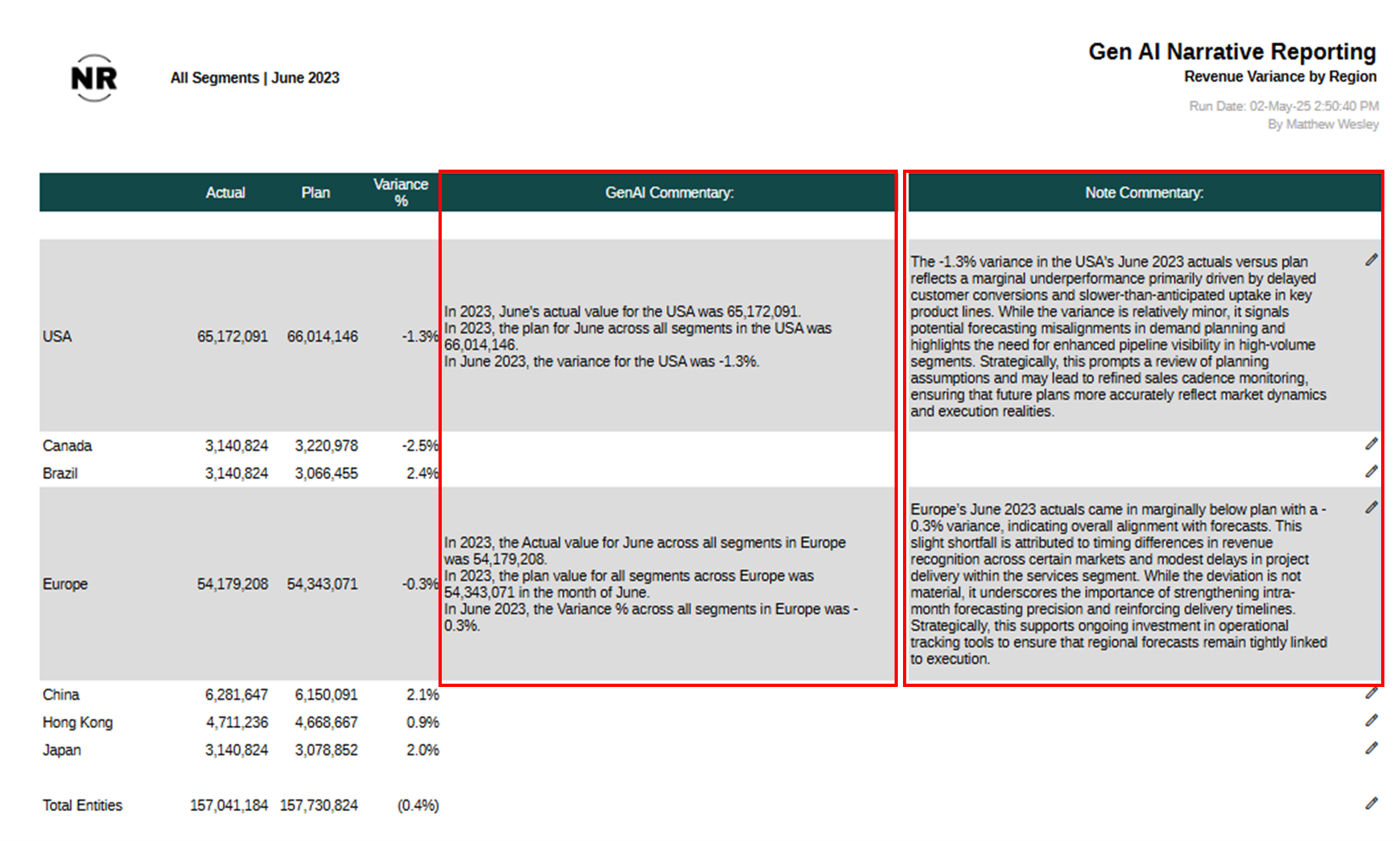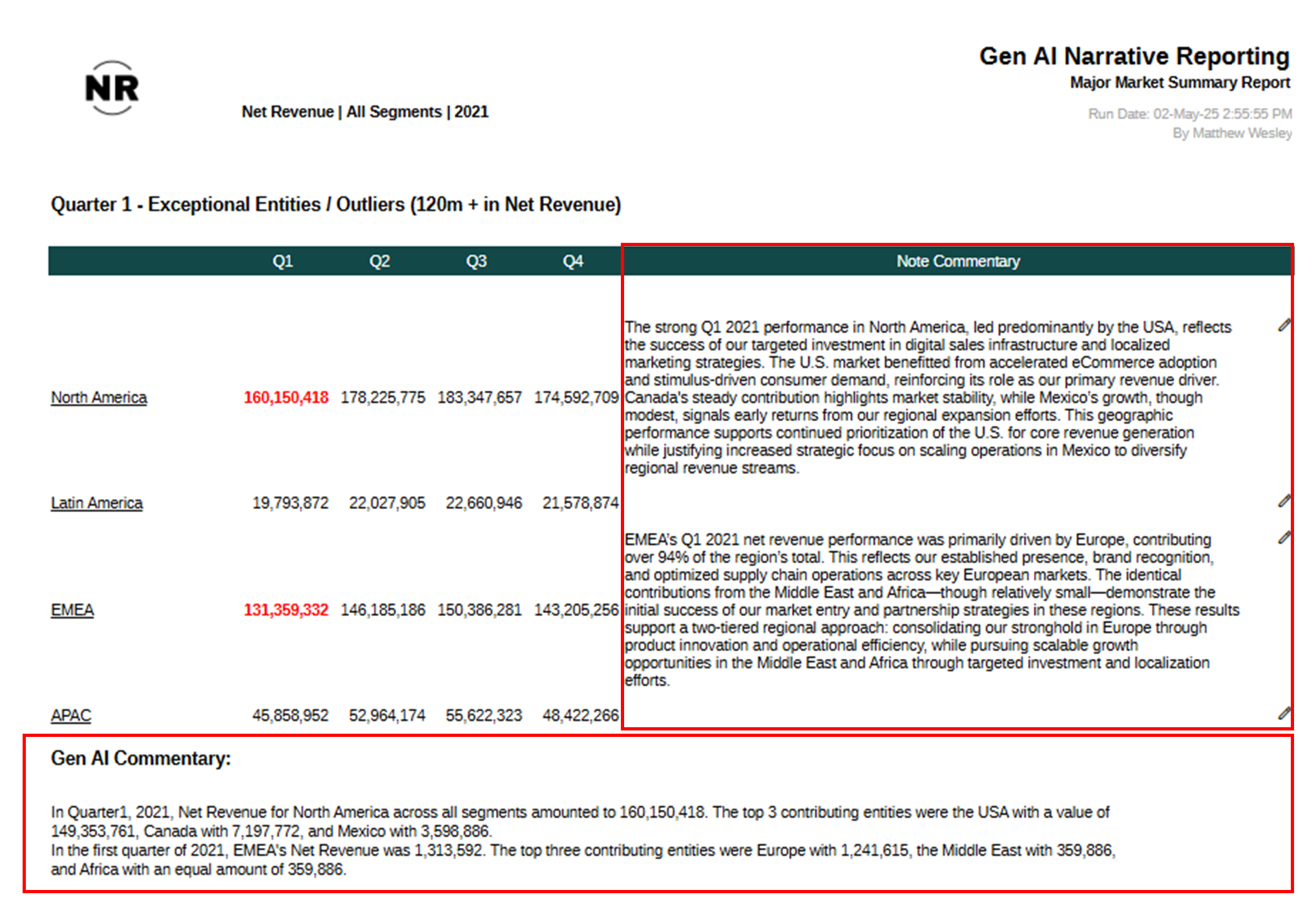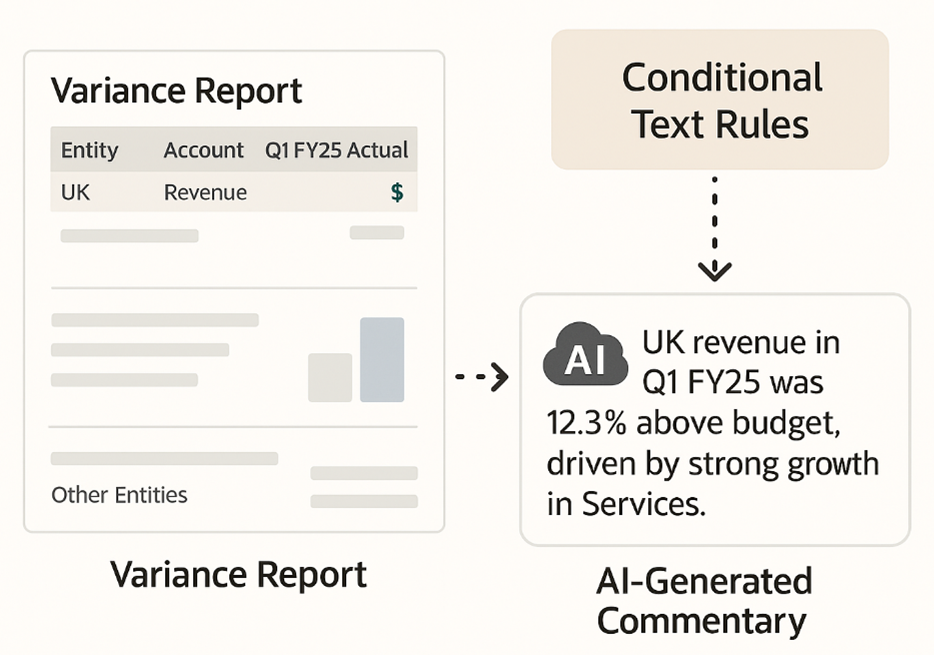In today’s dynamic financial landscape, organisations face increasing pressure to deliver timely and actionable insights. Traditional manual reporting is no longer sufficient to meet the pace of business. Enter Oracle Fusion Cloud EPM, now enhanced with a powerful new capability: Generative AI (Gen AI) integrated into the Narrative Reporting business process.
This latest innovation transforms financial reports into intelligent, insight-rich narratives. Gen AI analyses data, identifies anomalies, explains causality, and highlights trends over time. Used in tandem with Narrative Reporting’s Notes feature, Gen AI enables users to add layered, point-of-view-specific commentary—combining machine-generated observations with contextual business insights from cross-functional teams.
The result? A powerful synergy that eliminates manual effort, enhances collaboration, and builds a deep knowledge base across reporting cycles.
Need a walkthrough? Download our white paper on “Narrative Reporting – Gen AI: How to Successfully Leverage Gen AI to Boost your Reporting”.
Understanding EPM Narrative Reporting Gen AI
There are three key use cases for Gen AI in Oracle Narrative Reporting that represent a leap forward in intelligent financial commentary. In the following sections, we’ll explore how Gen AI:
- Describes exceptions by surfacing anomalies within reports,
- Explains causality by identifying the top contributing drivers,
- Performs comparative analysis by comparing performance across time.
Critically, we’ll also show how these AI-driven insights can be combined with Notes to create a more comprehensive, accurate, and collaborative reporting process.
What is a Note?
Notes in Oracle Narrative Reporting are anchored to specific Points of View—such as Account, Entity, and Scenario—ensuring commentary is directly tied to the exact data intersection it explains. This structure enables organisations to build a centralised, version-controlled repository of insights over time, transforming isolated reports into a rich narrative history that supports trend analysis, auditability, and continuous knowledge transfer across reporting cycles.
Amplify Insight with Generative AI and Notes
1. Describing Exceptions
Image 1 shows a Financial Consolidation report highlighting revenue variances by region. If the value for either scenario exceeds 50M, Gen AI automatically describes the exception. (This example is illustrative and can be fully customised to your requirements):
“In June 2023, the actual value for the USA was 65,172,091. The planned value for All Segments in the USA was 66,014. The Variance % across all segments for USA was -1.3%.”
This eliminates the need for manual scanning and provides immediate visibility into outliers—enabling stakeholders to focus on areas of concern.
Combined with Notes:
By inserting a Note Template tied to the Point of View, users can immediately add root cause commentary — such as pricing pressure, supply chain delays, or FX impact—creating a dual-layered narrative that merges machine observations with human insight, as seen in image 1.

Image 1 – Narrative Report Combining Gen AI and Notes #1.
2. Describing Causality for Exceptions
This AI drills deeper than ‘Describing Exceptions’ into dimensions that influence the exception. For example, within the Revenue Account, it identifies the top 3 contributing entities within North America:
“In Q1 2021, net revenue for North America across all segments amounted to 160,150,418. The top 3 contributing entities were the USA with a value of 149,353,761, Canada with 7,197,772, and Mexico with 3,598,886”.
This kind of root-cause analysis, which traditionally takes time, is now generated instantly—allowing CFOs and controllers to move from what happened to why it happened, especially when paired with Notes.
Combined with Notes:
When paired with Notes, this approach becomes even more powerful – image 2. Notes allow business users to layer in qualitative context, such as strategic initiatives, market conditions, or operational challenges that the AI cannot infer from numbers alone. This combination—AI-generated causality plus human insight—creates a complete narrative that answers not just what but why.

Image 2 – Gen AI and Notes combined #2.
3. Performing Comparative Analysis
For grids spanning multiple time periods (e.g., June ’23 Actuals vs. June 23’ Plan) the AI can perform temporal comparisons, such as:
“The Actual Cost of Sales for North America in June 2023 was GBP 47,337,845 USD. The Cost of Sales for North America in June 2023 under the ‘Plan’ scenario was GBP 47,594,038, while the ‘Actual’ scenario showed a value of GBP 47,337,845. This indicates an increase of GBP 256,193 or 0.54 % in the Cost of Sales..”
This supports trend analysis and storytelling across periods, ideal for board reporting or investor-ready packs. It also strengthens the narrative by embedding data-backed reasoning into commentary.
Combined with Notes:
Link a Note Template to two time periods in a column structure (e.g., June 23’ Actuals Vs. June 23’ Plan – image 3) to provide deeper narrative expansion. You can enable authors to add depth to the Gen AI automation and explain whether the uplift is sustainable or the result of one-off drivers, embedding foresight into your reporting cycle.

Image 3 – Gen AI and Notes Combined #3.
How Gen AI Integrates with Oracle Fusion Cloud EPM
Gen AI seamlessly integrates with Oracle’s Conditional Text framework, working in harmony with your existing financial reports. It leverages the power of artificial intelligence to analyse your data and generate relevant, context-aware narratives automatically. This integration ensures that the insights provided are always up-to-date and aligned with your latest financial data.

Image 4 – Overview of Gen AI working within a Report.
Take the Next Step with Oracle Consulting
Oracle’s EPM Narrative Reporting module, enhanced with the Gen AI feature, empowers finance professionals to create insightful, data-rich financial reports with greater ease and accuracy. By leveraging Gen AI effectively, organisations can enhance decision-making, improve reporting quality, and foster a data-driven culture across teams.
Explore this approach by downloading our white paper on “Narrative Reporting – Generative AI: How to Successfully Leverage Generative AI to Boost your Reporting”.
Note: The data used in this article is based on a hypothetical entity/s and is intended solely for illustrative purposes. It does not reflect any real organisation or customer.
